 Wow. I had heard that 2014’s Canada Reads was going to better than ever and I didn’t think it was possible … until now. I missed Jian‘s announcement of this years books and celebrity panelists, but I’m not going to let that stop me for weighing in.
Wow. I had heard that 2014’s Canada Reads was going to better than ever and I didn’t think it was possible … until now. I missed Jian‘s announcement of this years books and celebrity panelists, but I’m not going to let that stop me for weighing in.
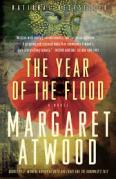 First up: Stephen Lewis defending Margaret Atwood‘s The Year of the Flood. Can it get any better than this? No. I mean, it’s Stephen (freakin’) Lewis defending Margret Atwood and a book about human folly leading to the end of times! I love this. Lewis is one of the greatest humanitarians, thinkers, and diplomats this world has ever seen. I admire him greatly. And Margaret Atwood is Margaret Atwood. Also a mental giant, fabulous writer and admirable soul. Combined, I like to believe that they are unstoppable. The Year of the Flood is my favorite of the MaddAddam trilogy, and it is definitely a book all Canadians should read. Lewis is a great orator and he can convince me of almost anything. And he may get some pointers from his son, Avi Lewis who defended Lawrence Hill‘s The Book of Negroes to win in 2009.
First up: Stephen Lewis defending Margaret Atwood‘s The Year of the Flood. Can it get any better than this? No. I mean, it’s Stephen (freakin’) Lewis defending Margret Atwood and a book about human folly leading to the end of times! I love this. Lewis is one of the greatest humanitarians, thinkers, and diplomats this world has ever seen. I admire him greatly. And Margaret Atwood is Margaret Atwood. Also a mental giant, fabulous writer and admirable soul. Combined, I like to believe that they are unstoppable. The Year of the Flood is my favorite of the MaddAddam trilogy, and it is definitely a book all Canadians should read. Lewis is a great orator and he can convince me of almost anything. And he may get some pointers from his son, Avi Lewis who defended Lawrence Hill‘s The Book of Negroes to win in 2009.
 Next up, Wab Kinew defending The Orenda by Joseph Boyden. I am not familiar with Kinew, but from what I’ve read he appears to be another heavy hitter. Musician, broadcaster, journalist, intellectual. I think he is going to do a commendable job, but it shouldn’t be too hard. He’s defending The Orenda after all. I haven’t read The Ordena yet, but if it anything like Boyden’s other works it will not only be a good read, it will be an important read. And that is what Canada Reads 2014 is all about. Boyden’s novel Three Day Road was chosen in Canada Reads 2006, but did not win. Will this be his year?
Next up, Wab Kinew defending The Orenda by Joseph Boyden. I am not familiar with Kinew, but from what I’ve read he appears to be another heavy hitter. Musician, broadcaster, journalist, intellectual. I think he is going to do a commendable job, but it shouldn’t be too hard. He’s defending The Orenda after all. I haven’t read The Ordena yet, but if it anything like Boyden’s other works it will not only be a good read, it will be an important read. And that is what Canada Reads 2014 is all about. Boyden’s novel Three Day Road was chosen in Canada Reads 2006, but did not win. Will this be his year?
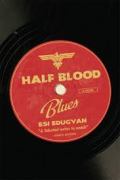 Announced third was Donovan Bailey defending Half-Blood Blues by Esi Edugyan. I haven’t read Half-Blood Blues yet, though I would like to. It comes with high acclaim, but I can see one slight draw back with it – it is not set in Canada or about Canadians so to speak. Sometimes in Canada Reads debates this can pose a problem. On the other hand, Bailey is a competitor who is not used to losing. From what I can remember he is quite well spoken, but will he be able to hold his ground against the likes of Lewis and Kinew?
Announced third was Donovan Bailey defending Half-Blood Blues by Esi Edugyan. I haven’t read Half-Blood Blues yet, though I would like to. It comes with high acclaim, but I can see one slight draw back with it – it is not set in Canada or about Canadians so to speak. Sometimes in Canada Reads debates this can pose a problem. On the other hand, Bailey is a competitor who is not used to losing. From what I can remember he is quite well spoken, but will he be able to hold his ground against the likes of Lewis and Kinew?
 Before we start taking ourselves too seriously let’s look to Samantha Bee defending Rawi Hage‘s Cockroach. I don’t mean to imply that Bee is a lightweight or that the other panelists are not funny, but let’s face it, Bee is most widely known as a comedian. She is witty, smart and humorous and that may win her some points. I don’t know much about Cockroach, although it received a lot of acclaim when it came out in 2008. Set in Montreal, it may gain the favor of listeners/ readers from la belle provence.
Before we start taking ourselves too seriously let’s look to Samantha Bee defending Rawi Hage‘s Cockroach. I don’t mean to imply that Bee is a lightweight or that the other panelists are not funny, but let’s face it, Bee is most widely known as a comedian. She is witty, smart and humorous and that may win her some points. I don’t know much about Cockroach, although it received a lot of acclaim when it came out in 2008. Set in Montreal, it may gain the favor of listeners/ readers from la belle provence.
 And finally, Annabel by Kathleen Winter is being defended by Sarah Gadon. I know absolutely nothing about Gadon except that she is an actress who has been in a number of David Cronenberg movies and appears to be a rising star. Annabel, on the other hand is a book I have read and enjoyed. Set on the East Coast, it is a novel dealing with sexuality and small town life. It is riveting.
And finally, Annabel by Kathleen Winter is being defended by Sarah Gadon. I know absolutely nothing about Gadon except that she is an actress who has been in a number of David Cronenberg movies and appears to be a rising star. Annabel, on the other hand is a book I have read and enjoyed. Set on the East Coast, it is a novel dealing with sexuality and small town life. It is riveting.
So there we go. As you can probably tell I’m gunning for Stephen Lewis and The Year of the Flood to win, but realistically the book that I find most deserving never wins Canada Reads. I have yet to read three of the contenders, so perhaps my opinions will change. Who do you think will win? Only time will tell.
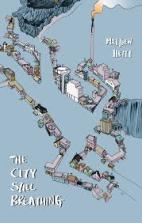 Have you heard of Matthew Heiti? Yeah, me neither, but he definitely on my list of one to watch now. I just finished reading his novel The City Still Breathing and I can say that I was blown away by it. Heiti can write. My expectations were not overly high going in – I picked it up mostly because it was set in Sudbury – but I was anything but disappointed.
Have you heard of Matthew Heiti? Yeah, me neither, but he definitely on my list of one to watch now. I just finished reading his novel The City Still Breathing and I can say that I was blown away by it. Heiti can write. My expectations were not overly high going in – I picked it up mostly because it was set in Sudbury – but I was anything but disappointed. Wow. I had heard that 2014’s
Wow. I had heard that 2014’s  First up:
First up:  Next up,
Next up,  Announced third was
Announced third was  Before we start taking ourselves too seriously let’s look to
Before we start taking ourselves too seriously let’s look to  And finally,
And finally,  I have been a fan of
I have been a fan of  Want Not
Want Not



 By now you have no doubt heard of
By now you have no doubt heard of  Did I love this book or what? Yes, it had to do with the fact that I am intrigued by
Did I love this book or what? Yes, it had to do with the fact that I am intrigued by Kim at
Kim at 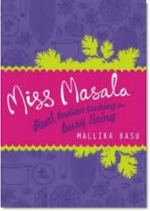
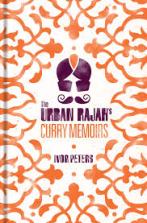 In the same vein is Ivor Peters
In the same vein is Ivor Peters  The Settler’s Cookbook
The Settler’s Cookbook Lamar Herrin
Lamar Herrin